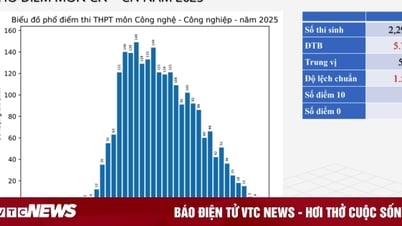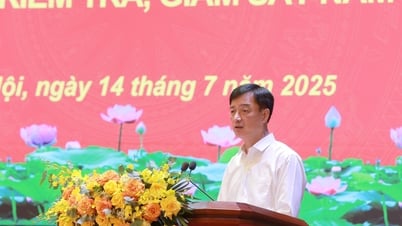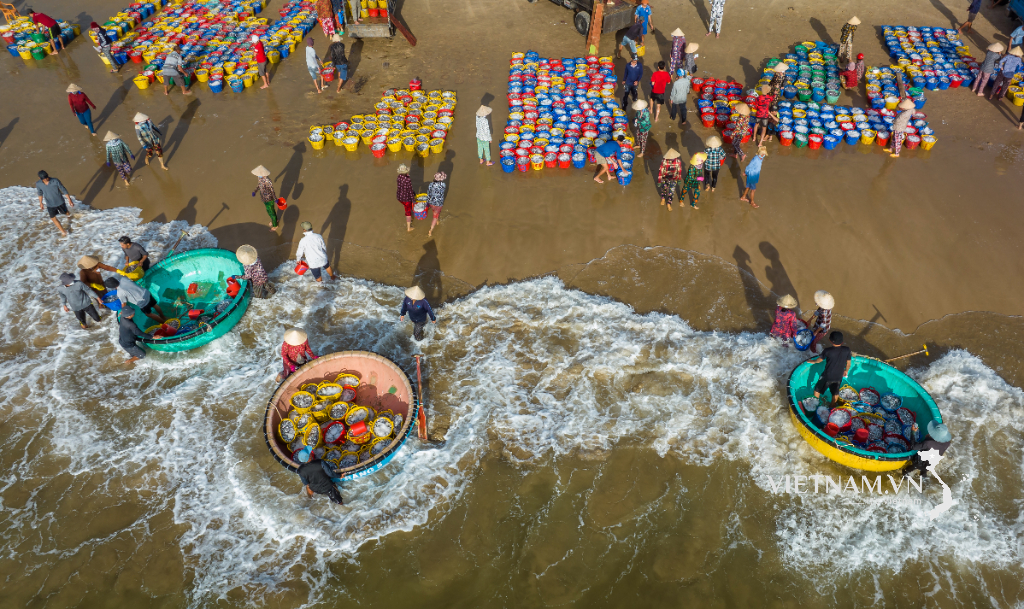1. Fashion, a vital link in the Spanish economy: a 23.4 billion euro industry and a safe haven amid geopolitical storms. TBN-17/6 Business Insider
Fashion, a key player in Spain. Its contribution to the global economy has reached a record: 23.8 billion euros in 2023, representing 1.7% of GDP.
Amid unprecedented geopolitical turmoil, Spain's industrial sector, Europe's fourth-largest market, is emerging as a magnet for foreign direct investment.
Complicated but important. This is how the Spanish Textile Retail Association (ARTE) summarizes the role of the Spanish national fashion industry. According to the textile industry figures, the sector has increased its contribution to the Spanish economy to a record level, reaching 23.8 billion euros in 2023, representing 1.7% of GDP.
“Every euro generated directly by textile retailers contributes 1.23 euros to the Spanish economy,” the industry association said. “Fashion is an economy and an industry that is resilient like few others,” said Ana López-Casero, president of Arte, a trade body that represents big names in the fashion industry, from Inditex to Primark and Mango.
The Spanish fashion industry, with 54,600 companies, has seen its turnover increase significantly compared to the average recorded over the past five years, reaching 51.97 billion euros compared to an average turnover of 40 billion euros between 2018 and 2022.
The financial impact of textiles on state revenues also reflects positive figures: 7.55 billion euros went to the state budget, up 16.9% year-on-year and accounting for 1.8% of national revenues.
The textile retail industry employs 240,300 people. Alicante, Málaga and especially the islands—both the Balearic and Canary Islands—are the cities where the industry contributes the most to employment, confirming the link between tourism and fashion retail.
Spain is currently the fourth most important fashion market in Europe, accounting for 12.1% of European textile retail sales, behind only Germany, Italy and France. As a result, of the more than 390 billion euros in sales generated by European textile retail companies, Spanish companies account for 12%.
Likewise, the Spanish fashion industry has continued to diversify its investments abroad, targeting high-potential markets such as China.
Despite the turbulent geopolitical context, the Spanish fashion industry has also established itself as a “center of attraction for foreign direct investment”. In this context, investments by multinational companies amounted to more than 772 million euros in 2022.
This trend is partly due to the dynamism of the Spanish economy, which has grown at an average rate of 2.9% over the past two years, outperforming other European economies in the region. According to analysts, one important reason is the continuous increase in tourist arrivals, which has helped to strengthen the attractiveness of the Spanish market for international investors in the fashion sector.
2. The European Investment Bank (EIB) is promoting a project to connect Spain and France via the Bay of Biscay with 1.6 billion euros. Spain-17/6 The Diplomat in Spain
Spain, France and the European Investment Bank (EIB) formally committed this Monday to funding the new electricity interconnection across the Bay of Biscay, a key infrastructure project aimed at strengthening the energy integration of the Iberian Peninsula with the rest of Europe.
The first signing ceremony, worth a total of €1.2 billion, took place this Monday in Luxembourg. The event was attended by EIB President Nadia Calviño; European Commissioner for Energy and Housing Dan Jorgensen; French Minister of Industry and Energy Marc Ferracci; Spanish Minister for the Ecological Transition Miguel González Suela; Redeia President Beatriz Corredor; and Thomas Veyrenc, member of the RTE Executive Board.
The project is being developed by Inelfe, a joint venture between Spanish (Red Eléctrica) and French (RTE) electricity transmission network operators. The aim of the project is to increase the capacity of electricity exchange between the two countries, from the current 2,800 megawatts to 5,000, an important step towards the European target of reaching 15% of the installed capacity interconnection by 2030.
The new infrastructure project will have a total length of 400 km, of which 300 km will run underwater, becoming the first underground electricity connection between Spain and France. Converter stations will be installed at each end, in Gatika and Cubnezais (France), to convert the direct current into alternating current, facilitating integration into the national grid.
The interconnection is expected to be operational in 2028. The project will then contribute to increasing the security of electricity supply in Spain, France and Portugal, providing access to cleaner and more affordable energy for millions of European citizens and preventing the emission of around 600,000 tonnes of CO₂ per year. It will also reduce the energy isolation of the Iberian Peninsula, strengthen its integration into the European energy market and improve the stability of the entire electricity system.
During the event, officials highlighted the strategic value of the project both for the energy transition and for strengthening cohesion and solidarity between European countries. EIB President Nadia Calviño stressed that this interconnection is necessary to overcome the peninsula's "energy island" status and represents a decisive step towards a more energy-integrated Europe.
Commissioner Dan Jorgensen stressed that more connected energy systems and markets are essential to ensure clean and stable supplies in every corner of the continent.
3. New protest against tourism in Barcelona, Spain. Spain-14/6 Euronews
New gatherings are expected to take place this afternoon on the islands of Mallorca and Ibiza. The Barcelona gathering attracted just 600 people, according to Metropolitan Police.
There was little public support for the protest in Barcelona against mass tourism and its consequences for the commercial structure, overcrowding in public spaces and rising housing costs in Spanish cities. According to the Guardia Urbana (City Police), there were only 600 protesters on Sunday morning.
The protest was organized by the Neighborhood Council for the Decline of Tourism (ABDT), and 120 groups took part in the march, including Sindicat de Llogateres (Landlords' Alliance) and Zeroport, groups that protested against the recent approval of the expansion of El Prat Airport announced by the President of the Generalitat (Catalan Government), Salvador Illa. The group's spokesperson condemned that the project, if approved by Parliament, would bring an additional 15 million passengers, including ten million tourists, affecting the lives of Barcelona residents.
The protest took place from Jardinets de Gràcia to the Sagrada Familia neighbourhood, along with the Gothic Quarter – the areas most affected by the presence of tourists. The organisers have once again condemned the lack of political action on the phenomenon. Of the 13 proposals submitted to the Barcelona City Council after the protest last July, they asserted that “not a single demand has been met, quite the opposite”.
Spain has practically doubled its population (around 48 million people) with the number of tourists visiting the country in 2024 reaching a record 94 million. Accordingly, Spain is the second most visited country in the world, after France in 2024. In addition to the limited supply of public housing, which is much lower than the European average, the increasing number of unregistered tourist apartments used by tourists has also contributed to the record increase in housing prices: purchase prices have accumulated 44 consecutive quarters of year-on-year increases and last quarter alone increased by around 12%.
A parallel protest was held in the Balearic Islands.
In the Balearic Islands, protests have taken place against mass tourism. According to various economic analyses, this business contributes more than 40% to the economic model of the Mediterranean islands, but also contributes to the degradation of natural spaces and increases the cost of living for islanders.
4. Sergio Vázquez (Ineco): "Spain is a powerhouse in implementing large projects" (May 28) Source: El País
The president of Ineco claims that the country could have built its high-speed rail network nine times cheaper than the UK - INECO is a Spanish public works engineering and consultancy company under the Ministry of Transport and Sustainable Mobility, a leader in the sector.
Sergio Vázquez, President of Ineco, in his speech at the CREO 2025 Forum, affirmed that Spain is a powerhouse in implementing large projects in many fields such as: Transport infrastructure; Renewable energy; Public health
Spain has built solid foundations for effective public administration, which is clearly reflected in the quality of the country’s infrastructure. Just compare a Spanish airport with those of other countries and you can see the difference in the level of organization and operation. This superiority is not limited to one area but is reflected in the entire transport infrastructure of the country.
Comprehensive infrastructure development strategy
Spain has adopted a unique development strategy: centralization for widespread distribution. Instead of connecting only major cities, the country has invested in building a transport infrastructure network evenly distributed throughout the country. As a result, 70% of the population has a high-speed train station within a radius of 50 km and 80% of the population has an airport near their residence. This philosophy stems from the view that it is impossible to have high-speed trains connecting only two points while the rest of the country feels alienated from the transformation of modern transport technology.
One of Spain’s proudest achievements is its ability to build a high-speed rail system that is extremely cost-effective. The cost of building a kilometer of high-speed rail in Spain is 50% cheaper than the European average and nine times cheaper than in the UK. This efficiency has allowed Spain to build more kilometers of high-speed rail with less money, creating a vast network that serves a large population.
Spain’s progress in the field of high-speed trains is evidenced by the reversal of the learning roles. Previously, Spanish experts had to go to France to learn about high-speed train technology, but today, it is French experts who come to Spain to learn from its experience. This shift represents a major step forward in Spain’s technical and project management capabilities, from being a country of learning to being a destination for those seeking to learn about efficient infrastructure development.
Despite its achievements, Spain is not without its challenges. The high-speed rail system has recently suffered some problems, especially after the introduction of the Avril trains from the manufacturer Talgo. However, reports from Ineco have confirmed that the overall performance of both the airport system and the rail network remains good, demonstrating the ability of the management system to monitor and overcome problems.
Spain’s success in infrastructure is inseparable from its strong engineering education system. The Polytechnic University of Madrid has four times as many students as MIT or Harvard in their respective fields, but costs ten times less. This creates a huge competitive advantage in terms of high-quality engineering talent at reasonable costs. Spain also demonstrates its ability to attract diverse talent from many countries, creating a dynamic and international working environment.
However, a major challenge facing Spain is the issue of salaries in the engineering sector. The salaries of Spanish engineers are currently low compared to other countries and even lower than some other professions in the country. In particular, the public and transport engineering sectors are not being remunerated commensurate with their importance and high level of expertise. In order to compete effectively for talent, both public and private companies need to adjust their salary policies to fully appreciate the competence and contributions of engineers.
Spain currently lacks a clear economic narrative about its capabilities and achievements. Clarifying and promoting the areas where Spain has strengths is crucial to strengthening its international position and attracting investment. The country needs to be more confident about its achievements and proactively promote its competitive advantages, especially in the areas of transport infrastructure and high-quality, affordable technical training.
In short, Spain has proven itself to be a powerhouse in developing cost-effective transport infrastructure and a strong technical education system. This success has not only benefited its citizens but also created opportunities to export technology and expertise internationally. However, to maintain and develop these strengths, Spain needs to address the wage issue and build a compelling economic story about national capabilities.
5. Brussels raises Spain's economic growth forecast to 2.6% amid eurozone weakness. (Spain-May 19) Source: Business Insider
Brussels joins list of institutions improving forecasts for Spain amid economic uncertainty.
The improvement contrasts with a broader slowdown in the eurozone, which is expected to grow 0.9% this year (below the forecast of 1.3%).
Brussels joins a growing list of institutions upgrading their forecasts for Spain amid economic uncertainty. Spain is set to be one of the fastest-growing economies by 2025. The improvement contrasts with a broader slowdown in the eurozone, which is expected to grow 0.9% this year, compared with a forecast of 1.3%.
Amid a weakening eurozone and threatened by trade tensions, the Spanish economy continues to grow. The European Commission has improved its growth forecast for Spain in 2025 in its latest forecast report, with Spanish GDP set to grow by 2.6% in 2025, up 0.3 percentage points from its previous estimate published in November.
With this increase, Brussels joins the list of institutions that have improved their forecasts for Spain amid uncertainty, after the International Monetary Fund (IMF) ranked the country as the leading major economy in global growth in 2025 and 2026. However, by 2026, growth is expected to slow, with an expected growth of 2%.
But not everything is positive. The European Commission has also updated its estimate of the public deficit, which is now expected to reach 2.8% in 2025, up from 2.6% in November. The new estimate exceeds the target set by the Spanish government in its medium-term fiscal plan (2.5%) by 0.3%. Despite the increase in the deficit, Brussels acknowledged that it was a positive trend, partly due to the gradual withdrawal of aid related to the energy crisis and the end of special measures after the severe flooding in Valencia.
In Spain, economic relations with the United States are somewhat limited, not least because the trade balance is tilted in favor of the United States. Moreover, less than 5% of exports go to the United States.
On inflation, Brussels estimates Spain's rate will rise to 2.3% this year, a tenth of a percentage point higher than forecast in the autumn, although it is expected to fall to 1.9% by 2026.
On the other hand, Spain is expected to maintain one of the highest unemployment rates in the EU, at 10.4% in 2025, well above the eurozone average (6.3%) and the EU as a whole (5.9%). However, employment will continue to grow, projected to increase by 2.1% in 2025, before falling to 1.6% in 2026.
The European Commission stressed that while significant differences in employment between countries still exist, they are narrowing. In particular, countries with historically high unemployment rates such as Spain and Greece are expected to see the most significant reductions in unemployment in the coming years.
6. The customs cooperation agreement between Spain and India will come into effect on June 6, 2025. (Spain-May 26) Source: The Diplomat in Spain
The Agreement between the Kingdom of Spain and the Republic of India on cooperation and mutual assistance in customs matters will enter into force on June 6.
The agreement was signed on 28 October 2024 by Prime Minister Pedro Sanchez and Indian Prime Minister Narendra Modi in Vadodara, during the first official visit by a Spanish Prime Minister to the Asian country since José Luis Rodríguez Zapatero's visit in 2007.
In view of the growing trade relations between India and Spain and potential violations of each other's customs laws, the Spanish Customs and Excise Department initiated negotiations in 2011 to reach an agreement for cooperation and mutual assistance in customs matters between the two countries.
This bilateral agreement strengthens the relationship between the two customs administrations, in addition to the international multilateral conventions of 1961, 1971 and 1988 on Narcotic Drugs, Psychotropic Substances and Illicit Traffic in Such Substances, the position of the World Customs Organization and the Agreement between India and the European Union on Cooperation and Mutual Assistance in Customs Matters, signed on 28 April 2004.
It would also allow for methods of cooperation not covered by the EU agreement, such as the exchange of information on sensitive goods, controlled deliveries and the exchange of officials.
This agreement regulates mutual assistance between the customs authorities of Spain and India in order to protect economic, tax, social, commercial and public health interests. It also refers to the need to ensure the implementation of customs regulations through international cooperation, within the framework customary in this field.
In the implementation of the Agreement, the two sides will take into account relevant international conventions, resolutions and recommendations of the World Customs Organization, promoting mutual assistance; the Agreement between the European Community and the Republic of India on cooperation and mutual assistance in customs matters, signed on 28 April 2004; and the Single Convention on Narcotic Drugs (New York, 1961), the Convention on Psychotropic Substances (Vienna, 1971) and the Convention against Illicit Traffic in Narcotic Drugs and Psychotropic Substances (Vienna, 1988).
7. Spain and Portugal call on Brussels to promote and finance energy connectivity projects. (Spain-May 22) Source: The Diplomat in Spain
Spain and Portugal have asked the European Commission for a solid political and financial commitment to accelerate electricity interconnection projects with the rest of the continent, following a widespread blackout that affected the Iberian Peninsula on April 28.
This Wednesday, Madrid and Lisbon conveyed to the European Union the urgent need to complete the electricity interconnection between the Iberian Peninsula and the rest of Europe. This request was formalized in a joint letter signed by the Third Vice President of the Spanish Government and Minister of Ecological Transition, Sara Aagesen, and the Portuguese Minister of Environment and Energy, Maria da Graça Carvalho.
In the letter, the Iberian government stressed that the recent blackouts had highlighted the importance of strengthening interconnection in the European electricity system, especially in emergency situations. Furthermore, it accused France of blocking important progress on new interconnection projects, which are considered essential to ensure security of supply and prevent future disruptions.
To address this, they propose holding a ministerial meeting later this year, with the participation of the European Commission and the French government, aimed at agreeing a roadmap with specific milestones to achieve the connectivity targets set by the EU for 2030 and 2040.
The Iberian Peninsula’s current electricity interconnection capacity is just 2.8%, well below the European target of 15% by 2030. According to Spain and Portugal, this deficit increases electricity prices and undermines the stability of their energy networks. Although existing infrastructure has been strengthened and a new metro line is being built across the Bay of Biscay, scheduled to be operational in 2028, the two countries are calling for a stronger political and financial commitment from the European Union.
8. Spain's tech ecosystem grows 22% and Madrid replaces Barcelona as the innovation capital. (Spain-May 28) Source: Business Insider
According to the latest Startup Ecosystem report, startups generate an economic impact of 14.816 billion euros in Spain and directly employ more than 108,000 people.
For the first time, the number of startups exceeds 5,000 and Madrid surpasses Barcelona in every indicator.
Spanish startups are consolidating their growth. The number of active companies increased by 22%, reaching a total of 8,580 by 2025. According to the National Tech Business Report 2025 compiled by the Startup Ecosystem platform, the business sector generates an economic impact of 14.816 billion euros and directly employs more than 108,000 people.
One of the most impressive data from the study is the strong momentum of startups, which increased from 3,640 in 2024 to 5,010 in 2025, representing an increase of 38%. This segment has created 28,900 jobs and an economic impact of more than 1.329 billion euros. In addition, among the registered companies, there are 484 scale-up companies, companies with annual growth exceeding 20% for at least two consecutive years.
For the first time, Madrid has overtaken Barcelona as the leader of the Spanish tech ecosystem. The capital is home to 1,560 tech companies, 937 startups and 112 scale-ups, compared to Barcelona’s 1,553, 911 and 93. Regionally, Catalonia remains at the top with 2,351 tech companies, followed by Madrid (2,189), the Valencian Community (966), the Basque Country (831) and Andalusia (714).
The gender gap continues to be one of the industry’s main challenges. Only 17% of tech founders are women, a figure that drops to 10% as companies scale. Furthermore, female entrepreneurs tend to start companies with co-founders: only 852 did so alone, compared to 3,676 men. Catalonia (645), Madrid (581) and the Valencian Community (261) have the largest concentration of founders.
The report also highlights a strong recovery in investment in 2024, rising more than 60% to €2.92 billion. This increase is largely due to an increase in venture capital debt, which now accounts for 19.59% of the total.
Fintech led in terms of capital raised with €767 million, followed by the mobile sector (€507 million), travel tech (€456 million), biotech, energy and artificial intelligence.
Despite the ecosystem's progress, the report points to structural challenges such as the scarcity of national growth funds, low participation of insurance companies and large corporates as investors, and limited exit generation.
The report's data comes from an analysis of more than 15,000 companies, of which more than 8,000 have been certified by the Commercial Registry. The research was supported by numerous organizations such as Enisa, Icex, Xunta de Galicia, INFO Murcia and the Madrimasd Foundation, among others.
Source: https://moit.gov.vn/tin-tuc/thi-truong-nuoc-ngoai/tong-hop-tinh-hinh-kinh-te-cong-nghiep-va-thuong-mai-tay-ban-nha.html





































































































Comment (0)